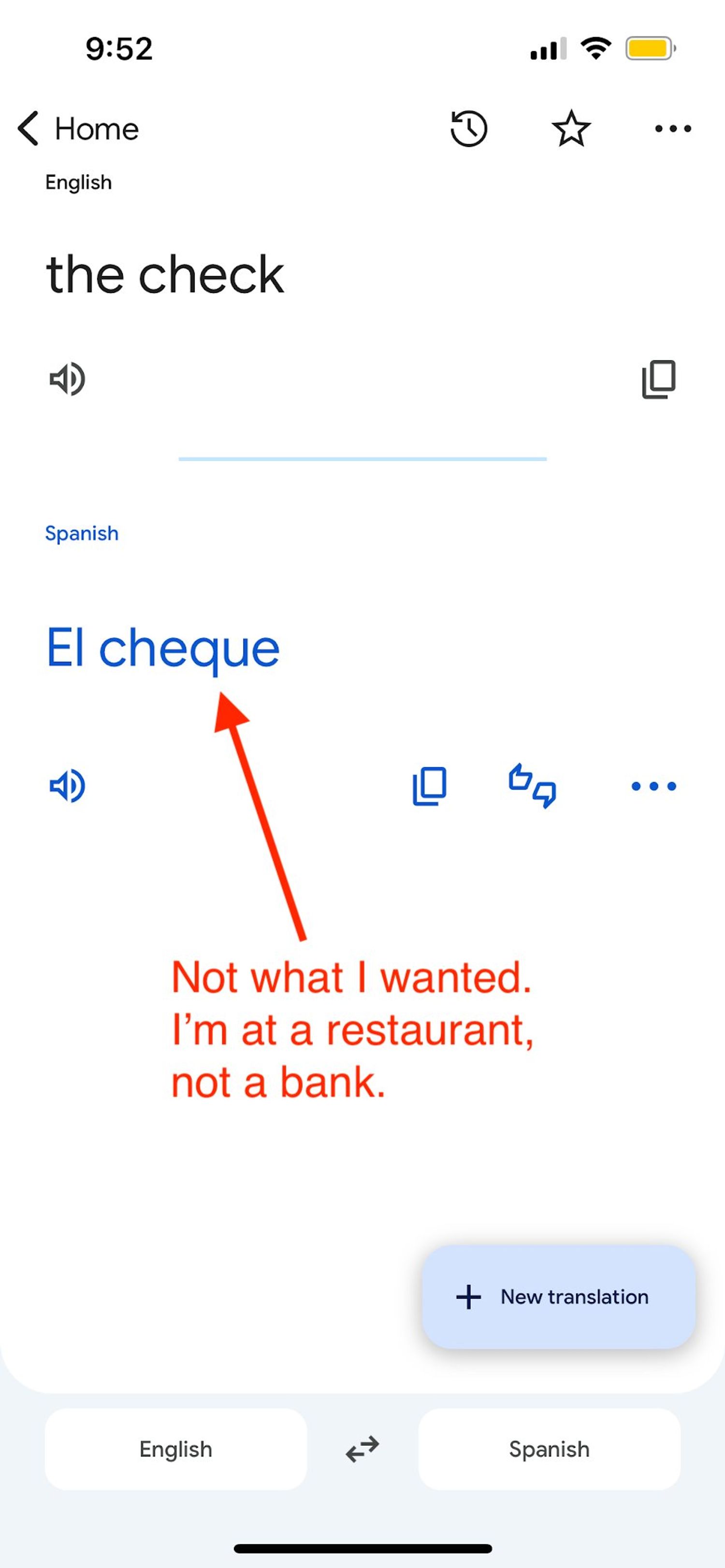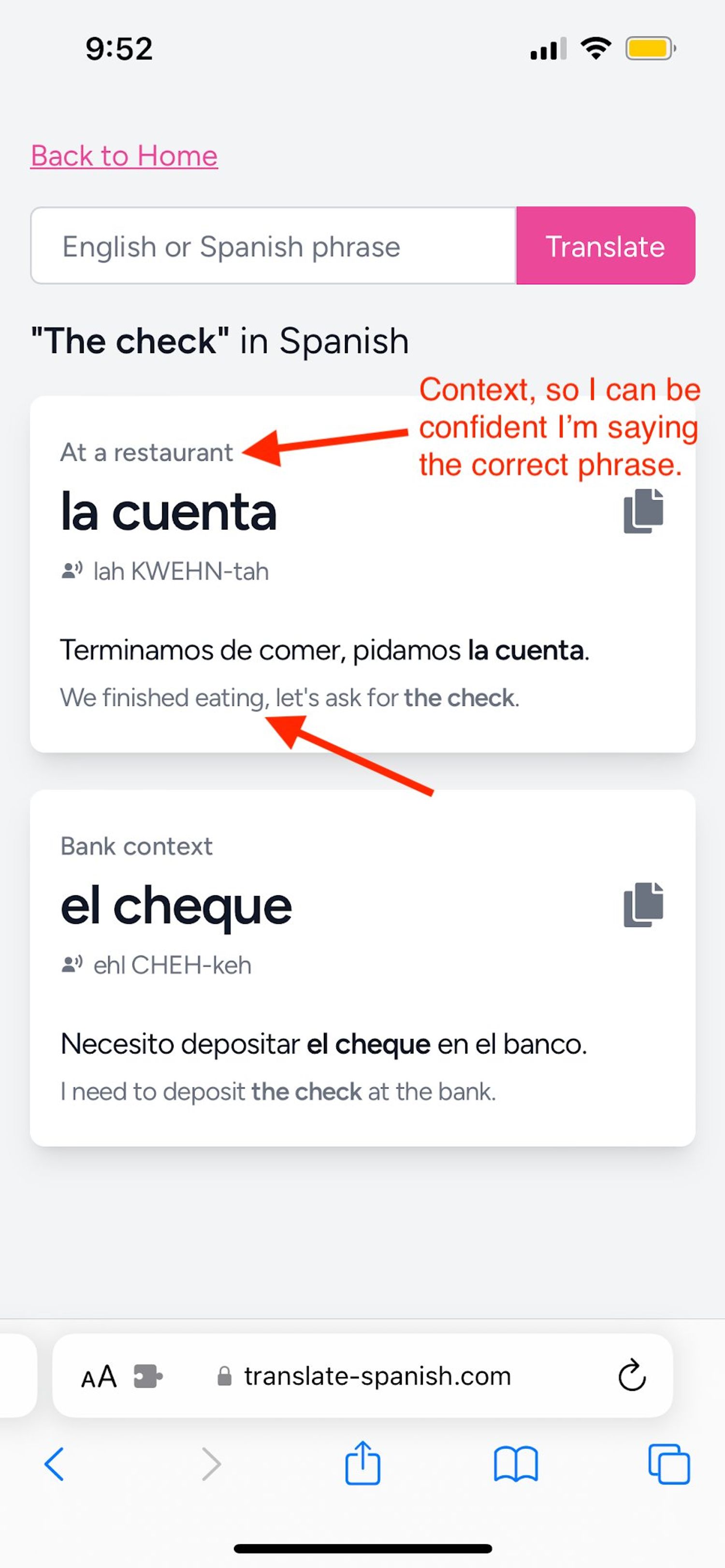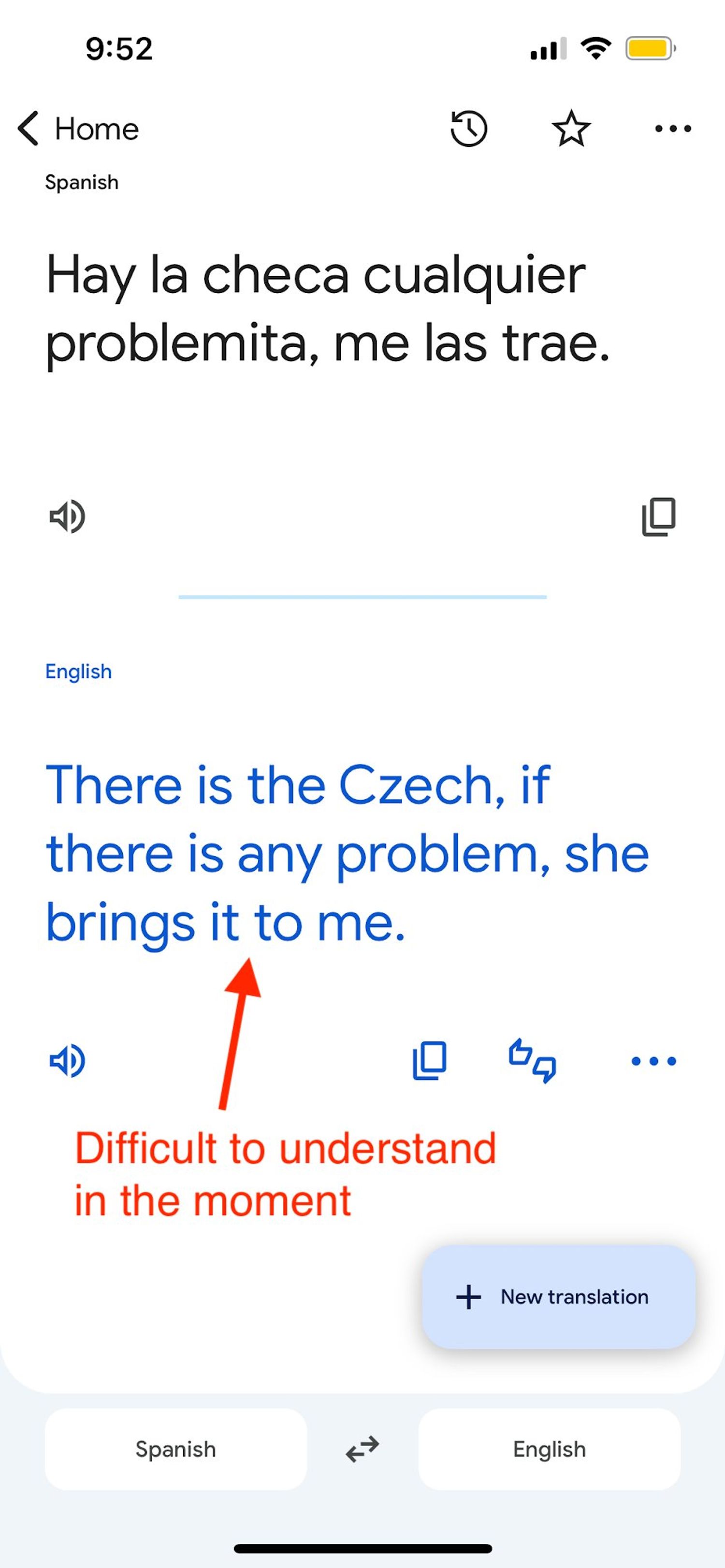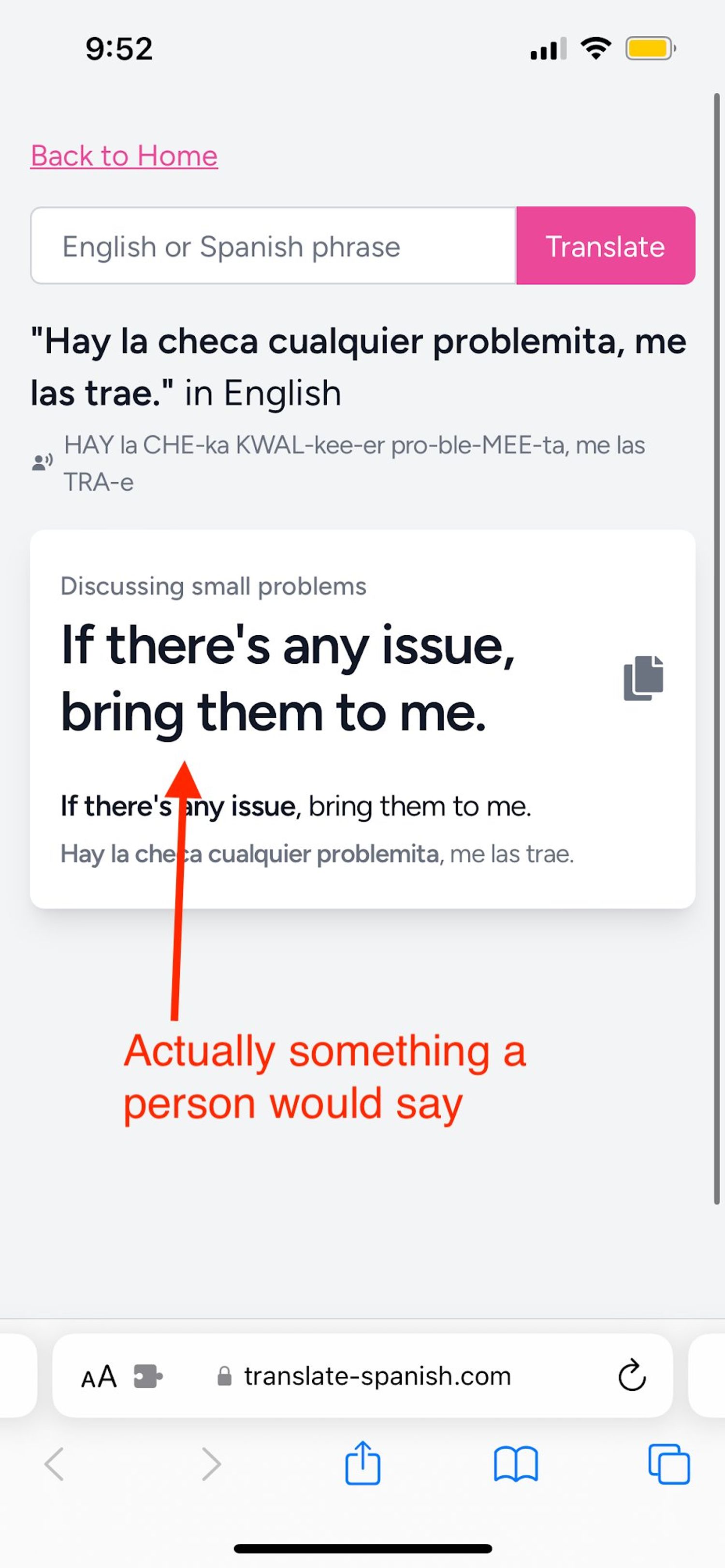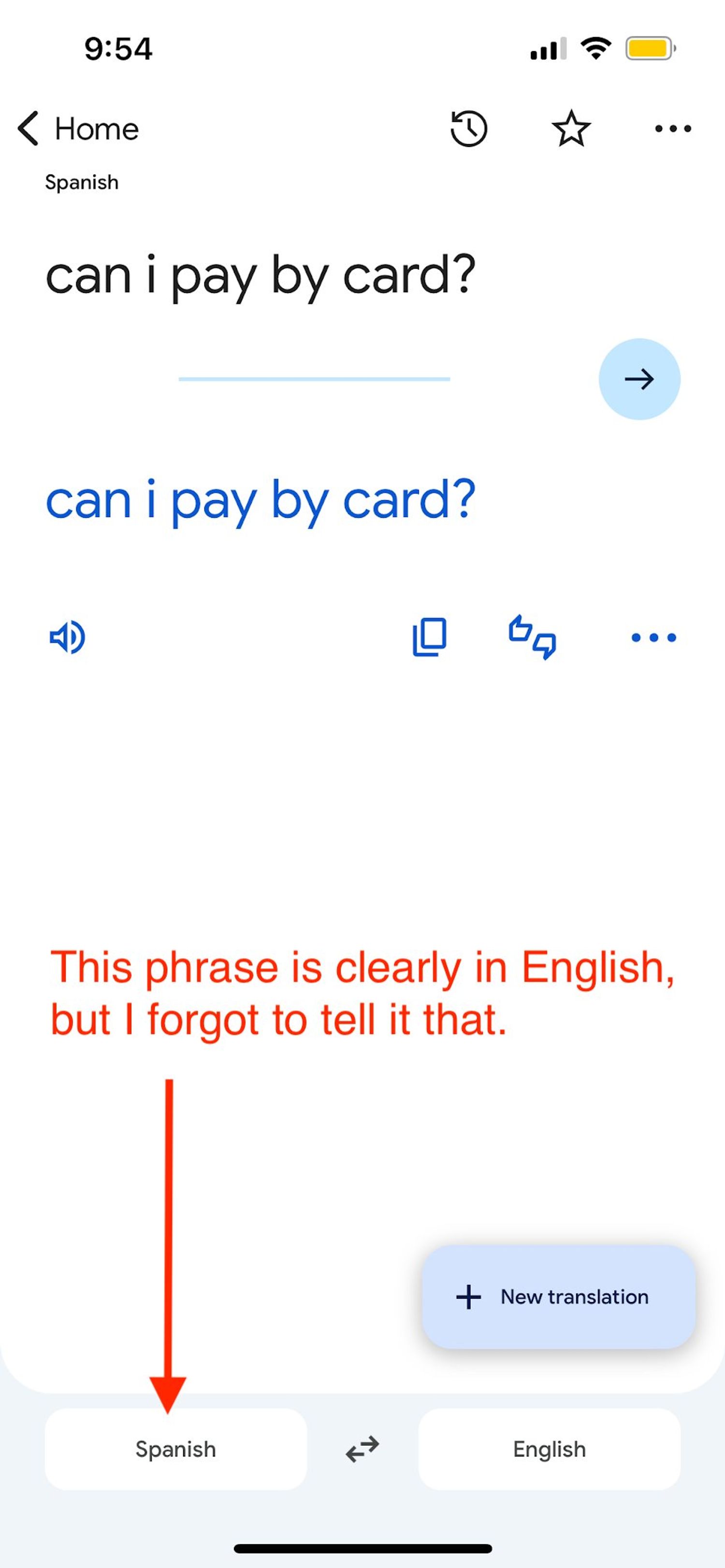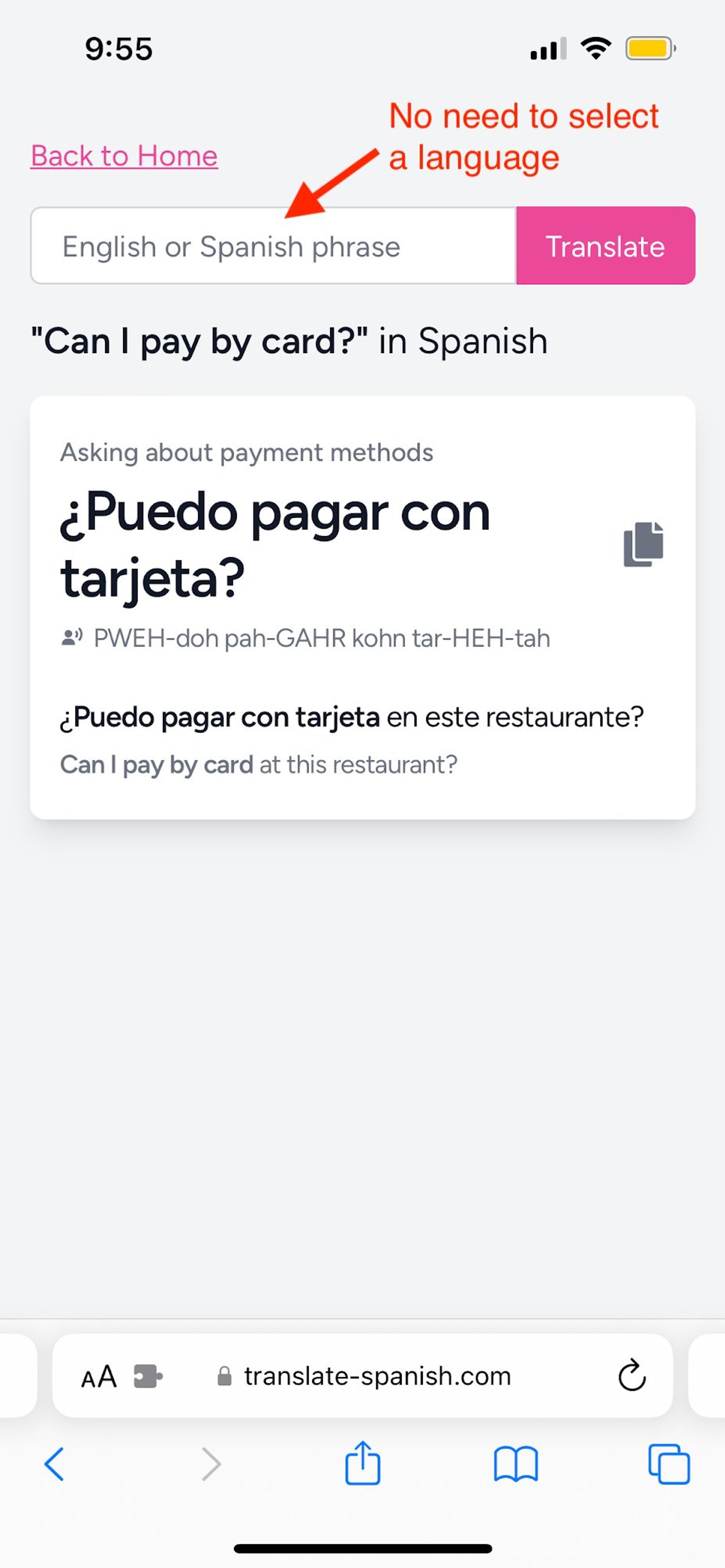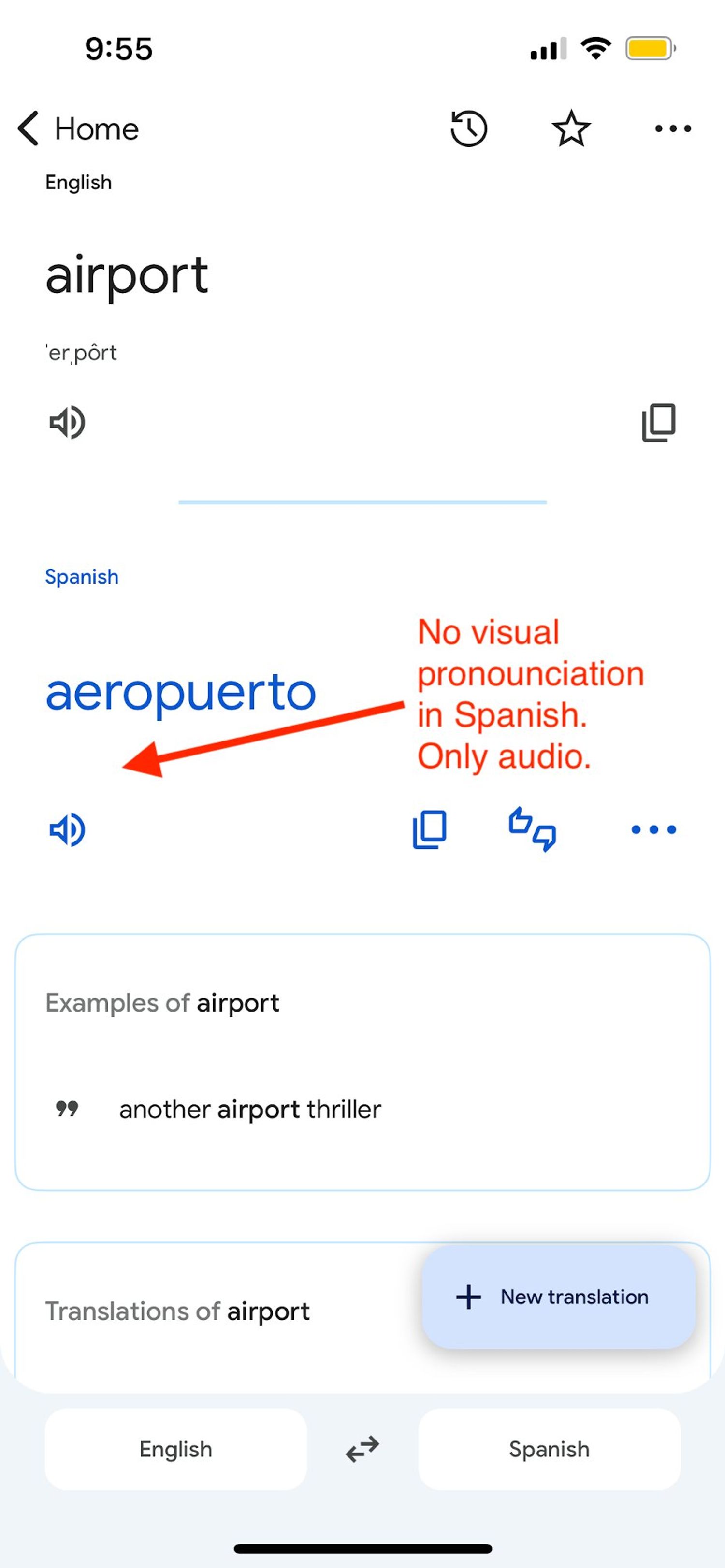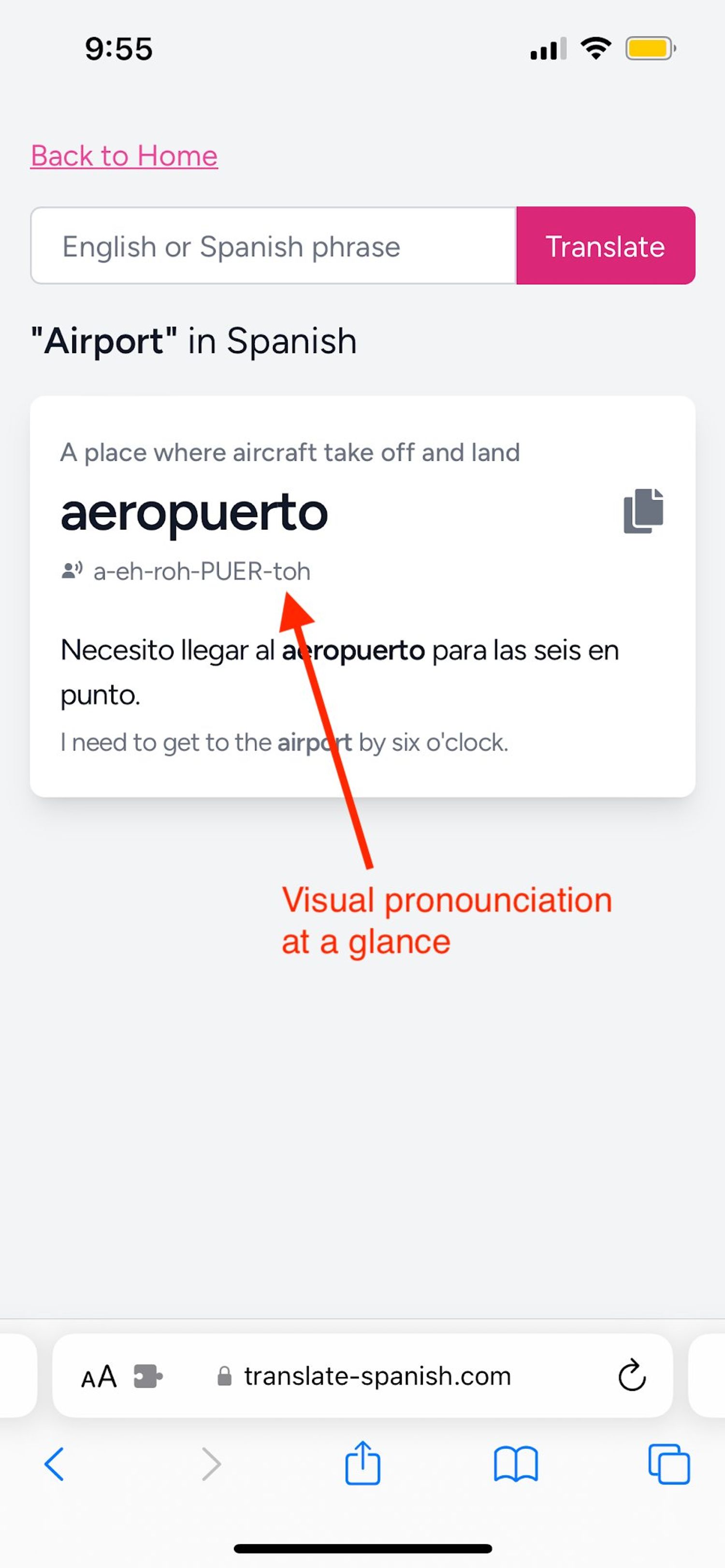I built an AI-powered app better than Google Translate. Here are 4 problems it solves.
With only a few days of focused effort, I was able to build an AI-powered app that’s more useful than Google Translate. It currently lives as a web app at translate-spanish.com.
That’s a bold statement, so let me clarify. I’m not building a general-purpose translator. I can’t beat the behemoths that way. But what I can do is niche down and build the best app for English speakers struggling in a Spanish-speaking country. When every single feature is optimized around this use case, I can build something far better than anything already in the market.
Why am I building this? My previous post explains more, but the gist is that I recently moved to Mexico City and I’ve had daily struggles with Google Translate. It’s great for translating paragraphs of text, but it’s pretty bad for short phrases in everyday life. When there’s even a tiny bit of ambiguity, it often assumes the wrong context. Other apps suffer from the opposite problem, providing way too much context to process in the moment.
I tried to find another app better suited to my needs, but I couldn’t find one. So I built one myself, powered by OpenAI’s GPT-4o.
Here are four problems it solves.
1. Lack of context
Words can have multiple meanings, so context is important. Google Translate needs you to give it enough context in order to accurately translate anything. This is fine for large chunks of text, but shifts a lot of responsibility onto the user when translating short words and phrases.
When I want to ask for “the check”, Google Translate gives me the word for a bank check rather than a restaurant check. What’s worse is that it gives me no indication that it’s using the wrong translation. I have to learn outside the app that it gave me the wrong translation, then go back to it with more context to get a correct translation.
It’s been years since I wrote a bank check. My app prioritizes phrases someone is likely to use daily in 2024. It also provides enough context to give me confidence in the translation.
2. Confusing translations
Google Translate often gets the object of a sentence wrong when translating Spanish into English. Since Spanish uses the same verb form for “he”, “she”, and (formal) “you”, it often gives a confusing translation.
Here’s an actual phrase someone said to me after I got some keys copied. We used Google Translation in this interaction, and in the heat of the moment, I had no idea what the guy was saying. It takes some conscious thought to interpret this translation.
When I type the exact same phrase into my app, it gives me a translation that immediately makes sense.
3. Ease of use
As I go about my everyday life, I’m constantly translating both English phrases and Spanish phrases. Google Translate requires you to specify which language you’re starting with. Again, putting more burden on the user.
I constantly have “Spanish” accidentally selected when translating from English, and vice versa. If you have the wrong language selected, it just spits your input phrase back at you. A minor annoyance, but it adds up over time.
My app just… figures it out. One box. Type anything in English or Spanish. It’ll figure out which language you’re trying to translate. This seems like low-hanging fruit.
4. Pronunciation (pro-nun-see-AY-shun)
I have trouble pronouncing some words in Spanish. Google Translate gives a button where you can listen to the phrase, but I’m usually not in a situation where it’s convenient to listen.
My app gives a visual pronunciation guide for everything it translates into Spanish. I find this far more useful in everyday life than having to use audio.
Since this app is specifically optimized for English speakers learning Spanish, all pronunciation guides are in Spanish. Type an English phrase and learn how to pronounce the Spanish translation. Type a Spanish phrase and learn how to pronounce that exact phrase, no translation needed.
So much more to come…
This is still at such an early stage, and there’s much more to come. I have a little over two months left in Mexico City to dogfood this, and I’m hoping to make this the absolute best app for English speakers trying to navigate day to day life among Spanish speakers.
Try it out at translate-spanish.com. Let me know if you have any feedback or ideas!
